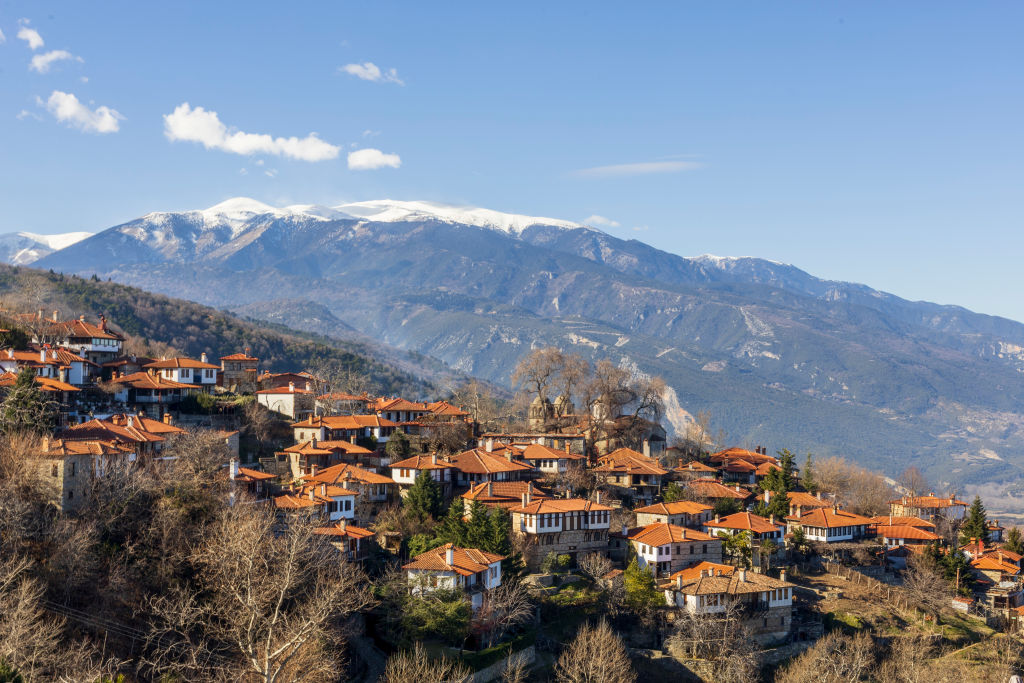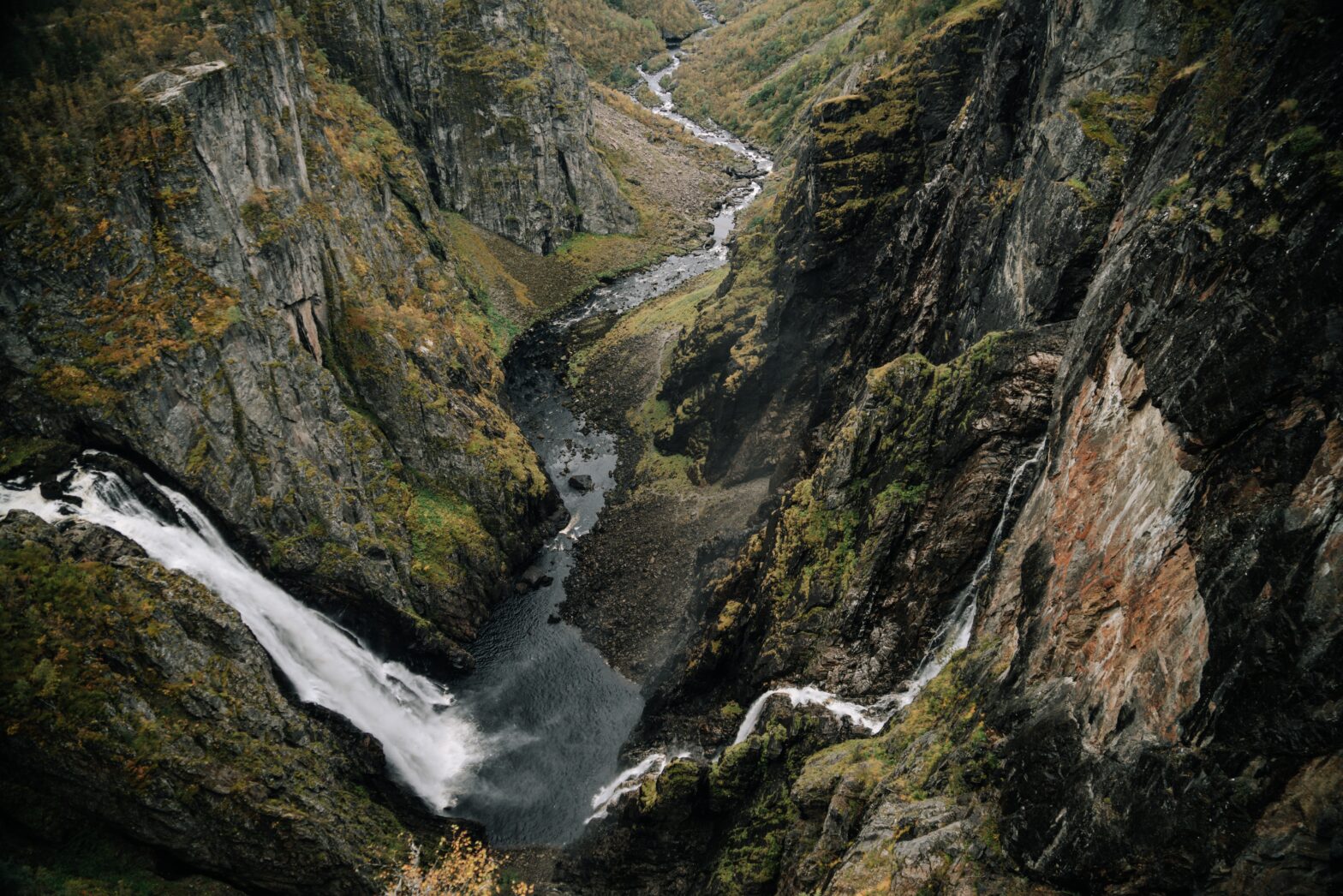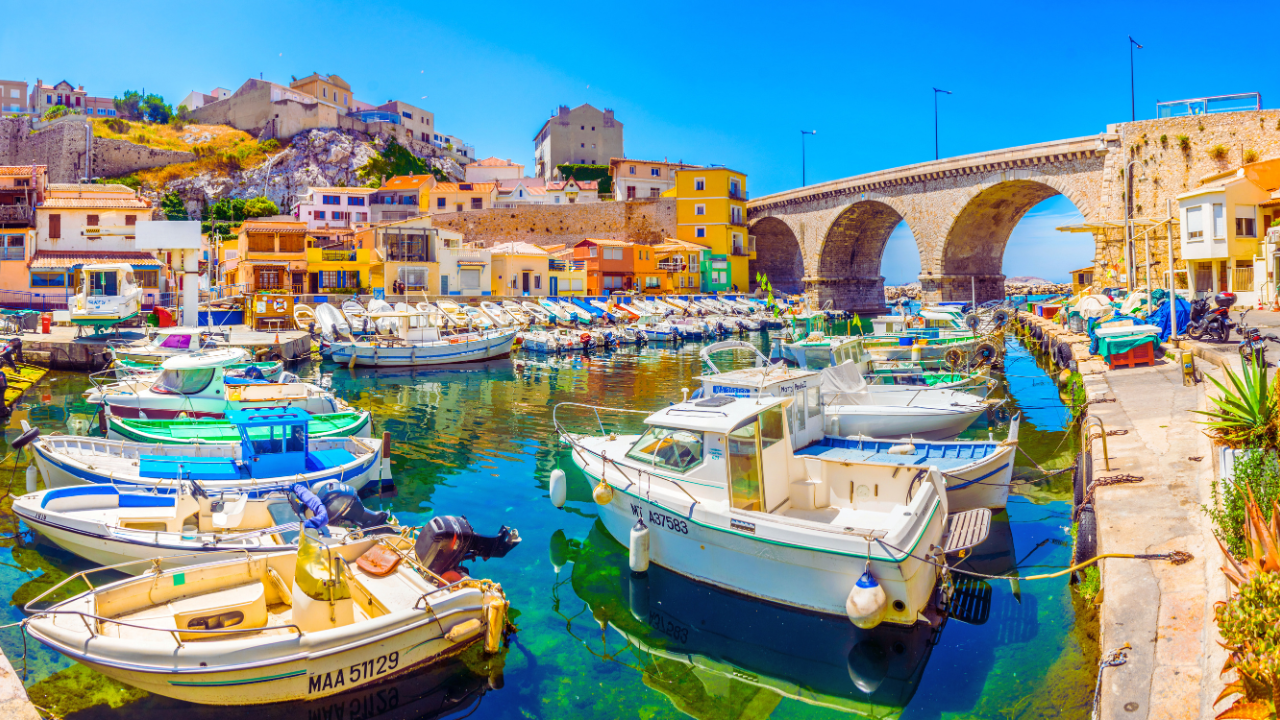Hiking Mount Olympus in Greece is an awe-inspiring adventure that involves rich mythology, stunning natural landscapes and thrilling challenges. The mountain sits approximately 2,917 meters high and makes for an alluring destination for mythology enthusiasts and hikers alike. Ascending the mountain is an alluring feat in itself which offers diverse ecosystems, dense forests, and alpine meadows covered in vibrant wildflowers. Hiking Mount Olympus’s summit is culturally enriching in itself, as there are ancient ruins, including the Monastery of Agios Dionysios and the Enipeas Gorge. The final stretch of the mountain is unparalleded and provides hikers with a rewarding experience. Known as Mytikas, the tallest peak of the mountain offers a unique blend of natural grandeur and mythology making this one of a kind experience a must-visit.
Trail Overview
Taking hikers through diverse terrains, ancient forests and rugged landscapes. The town of Litochoro is a common base for hikers, which makes for a captivating hiking journey. The most popular trail is known as “Climbing Path,” which takes hikers through dense pine forests the gradually reveal stunning views of the surrounding valleys and peaks. As the elevation increases, the landscape transforms into alpine meadows with vibrant wildflowers. While hiking the trail the landscape becomes more rugged with rocky sections that require careful navigation and physical steadfastness. Hikers should always be prepared for mountaineering techniques to reach the peak of the mountain.
Climbing Mount Olympus is well worth the try as the summit offers breathtaking views that feature the Aegean Sea and an overview of the Greek countryside. Mixing physical challenge, cultural significance and the beauty of the outdoors, Mount Olympus makes for the ultimate bucket list adventure.
Permits and Regulations
While climbing Mount Olympus is a find and breathtaking adventure, there are key things to know to ensure a safe and enjoyable experience. While no permits are required for ascending the mountain, there are some guidelines to follow:
1. Respect the National Park: Mount Olympus is a designated national park, and visitors are expected to respect the natural environment. Stay on marked trails, avoid littering, and refrain from damaging flora or fauna.
2. Inform the Park Authorities: Before starting your hike, it is recommended to inform the park authorities or visitor center about your plans. This helps them keep track of visitors and ensures your safety.
3. Check Weather Conditions: Mount Olympus weather can change rapidly, so it’s crucial to check the forecast before setting off. Unfavorable weather conditions can make the trails dangerous or inaccessible.
4. Hiking Safety: Carry essential hiking gear, including proper footwear, clothing, sufficient water, and food. Depending on the season and trail, you may also need hiking poles, a headlamp, and a map or GPS device.
5. Respect Cultural Sites: Mount Olympus holds significant cultural and mythological importance. Show respect when passing by ancient ruins or religious sites, and avoid damaging or disturbing them.
6. Emergency Services: Familiarize yourself with the emergency services available in the area. Save the emergency hotline numbers and inform someone of your itinerary and estimated return time.
7. Wildlife and Plant Life: Observe wildlife from a distance and avoid feeding or approaching animals. Similarly, do not collect plants or disturb the natural vegetation.
By adhering to these permits and regulations, you contribute to the preservation of Mount Olympus’ natural beauty and ensure a safe and enjoyable hiking experience for yourself and future visitors.
Trail Highlights and Points Of Interest
There are a ton of notable trail highlights to take note of while climbing Mount Olympus. Here are a few ahead to keep your eyes on.
As you begin your journey, the Enipeas Gorge is absoultely stunning. The trail takes you through this picturesque landscape with its towering cliffs and the Enipeas River flowing alongside, creating a serene and enchanting atmosphere. Prionia is the starting point of the hike is nestled in a beautiful forested area. It serves as a gateway to the higher slopes of Mount Olympus, offering a serene and tranquil environment as you embark on your adventure. Located at an elevation of approximately 2,000 meters (6,500 feet), Petrostrouga provides a captivating viewpoint where you can pause and admire the breathtaking landscapes. From here, you can witness panoramic vistas of the surrounding valleys and peaks, creating a truly memorable experience.Refuge Spilios Agapitos is situated at an altitude of around 2,100 meters (6,900 feet), is a popular resting spot for hikers. It offers basic amenities, such as food, water, and shelter, allowing you to refuel and recharge before continuing your ascent. As you get near the summit, you’ll encounter Skala, a challenging section that requires some scrambling and rock climbing. This thrilling part of the trail adds an adventurous element to the hike and rewards you with an exhilarating sense of accomplishment upon reaching the peak. Standing at 2,917 meters (9,570 feet), the summit of Mount Olympus, known as Mytikas, is the ultimate highlight of the climb. Reaching this mythical peak grants you breathtaking, panoramic views of the surrounding mountains, deep valleys, and the vastness of the Aegean Sea, leaving you in awe of the natural beauty that unfolds before you.
Safety Considerations
While hiking Mount Olympus, safety is a top priority, which is why staying vigilent and properly prepared ahead of your trip is paramount. Here are a few things to consider.
Physical Fitness: Mount Olympus is a challenging hike that requires a good level of physical fitness. Ensure you are adequately prepared by engaging in regular exercise and building stamina before attempting the climb.
Weather Conditions: The weather on Mount Olympus can be unpredictable, with rapid changes in temperature, visibility, and precipitation. Check the weather forecast before heading out and be prepared with appropriate clothing layers, including rain gear.
Trail Conditions and Markings: Stick to marked trails and follow trail markers. It’s essential to stay on the designated paths to avoid getting lost or venturing into dangerous areas.
Equipment: Carry appropriate hiking gear, including sturdy footwear with good traction, a backpack with essential supplies (water, food, extra clothing), a first aid kit, a map or GPS device, a headlamp, and hiking poles if needed. Make sure your equipment is in good condition before the hike.
Hydration and Nutrition: Stay hydrated by carrying an adequate supply of water and regularly drinking throughout the hike. Pack nutritious snacks or meals to keep your energy levels sustained.
Pace and Rest: Pace yourself during the hike, taking regular breaks to rest and recover. Pushing beyond your limits can lead to exhaustion and increase the risk of accidents or injuries.
Wildlife Awareness: Be aware of the presence of wildlife, including snakes and insects. Respect their habitats and maintain a safe distance.
Emergency Preparedness: Familiarize yourself with the emergency services available in the area and save their contact information. Inform someone of your hiking plans, including your expected return time. Carry a whistle or signaling device for emergencies.
9. Group Hiking: Consider hiking with a group or at least inform others about your plans. Hiking with companions enhances safety and provides assistance in case of emergencies.
10. Respect Your Limits: Be honest about your abilities and experience. If you feel unsure or uncomfortable at any point during the hike, it’s better to turn back or seek assistance rather than risking your safety.
Preparation and Planning
Preparation and adequate planning are of crucial importance which is why research, timing and weather, physical fitness, packing the most important essentials and understanding permits and regulations can set you up for success. Ahead of your hike, always be sure to check the weather forecast beforehand and prepare for any changes in temperature and precipitation. Early mornings provide clear views for hikers, which is why planning your trip from day to evening can further help to provide a more enjoyable experience. Lastly, by staying physically active and well trained, rest assured that this hike will be one of the best hikes you’ve ever had.
People Ask: Mount Olympus

1. Q: How tall is Mount Olympus?
A: Mount Olympus, located in Greece, is approximately 2,917 meters (9,570 feet) tall.
2. Q: What is the best time of year to climb Mount Olympus?
A: The best time to climb Mount Olympus is generally during the summer months, from June to September, when the weather is more favorable and the trails are accessible.
3. Q: How long does it take to climb Mount Olympus?
A: The duration of the climb can vary depending on the route and individual fitness levels. On average, it takes about 2-3 days to reach the summit and return to the base.
4. Q: Are there different routes to climb Mount Olympus?
A: Yes, there are various routes to climb Mount Olympus. The most popular and well-marked route is the E4 trail, which starts from the town of Litochoro.
5. Q: Is climbing Mount Olympus suitable for beginners?
A: While Mount Olympus offers routes for climbers of different skill levels, climbing to the summit is considered a moderately challenging endeavor and requires a reasonable level of physical fitness and endurance.
6. Q: Are there any permits or fees required to climb Mount Olympus?
A: No permits or fees are required to climb Mount Olympus. However, it is always advisable to check with local authorities or tour operators for any updated regulations.
7. Q: What kind of equipment is necessary for climbing Mount Olympus?
A: Essential equipment includes sturdy hiking boots, appropriate clothing layers, a backpack, plenty of water, food, navigation tools (map, compass, or GPS), and basic camping gear if planning to stay overnight.
8. Q: Are there any dangers or risks associated with climbing Mount Olympus?
A: Like any mountain climb, there are inherent risks involved. These can include steep and rugged terrain, unpredictable weather conditions, altitude sickness, and the need for self-sufficiency in remote areas. It is important to be prepared, informed, and cautious.
9. Q: Are there any guided tours or professional guides available for climbing Mount Olympus?
A: Yes, there are tour companies and professional guides who offer guided climbs of Mount Olympus. They can provide valuable knowledge, assistance, and ensure a safer climbing experience.
10. Q: What are some notable landmarks or highlights along the way to the summit of Mount Olympus?
A: Along the climbing routes, you will encounter various landmarks, including the famous Prionia, a beautiful forested area, as well as the Plateau of the Muses, a stunning high-altitude plateau. The summit, Mytikas, offers breathtaking views of the surrounding landscape and the Aegean Sea.
11. Q: Is Mount Olympus pet friendly?
A: Unfortunately, Mount Olympus does not currently have protocol for pets. However, it can always be made a group activity by bringing friends.





